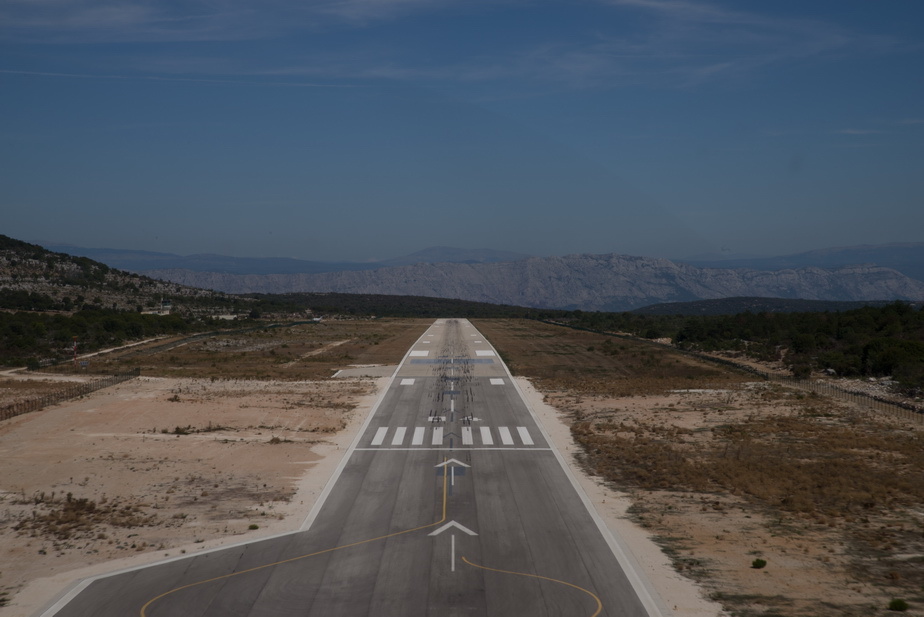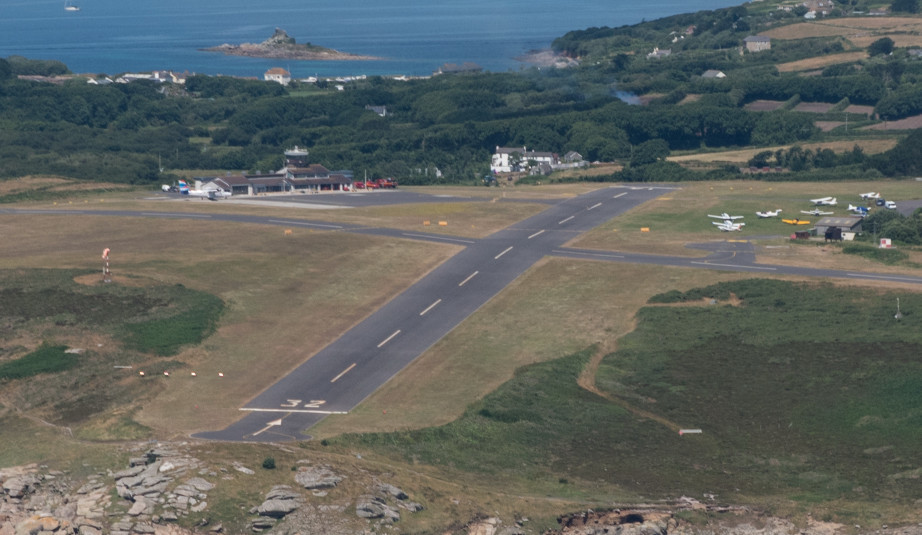This (Brac LDSB) seems to be one; not too noticeable

Obviously there are much steeper ones e.g. the Scilly Isles EGHE

I wonder if there are guidelines in runway design, which place limits on this?
Sure. ICAO Annex 14 to the Chicago convention.
Biggin is hump backed
Bristol is rather interesting.
The dip on RW31L at Abu Dhabi also creates mischief.
Losinj LDLO, Vrsar LDPV and Split LDSP are also interesting 
Fishburn anyone?
What I was getting at is what requirements there are for flatness versus aircraft type/weight/whatever. Obviously nothing controls how big a hump you have in your “farm strip” and probably any grass runway is totally uncontrolled (ones approved for AOC ops might be a different thing).
This is from ICAO Annex 14:
Slopes on runways
3.1.13 Longitudinal slopes
Recommendation.— The slope computed by dividing the difference between the maximum and minimum elevation along the runway centre line by the runway length should not exceed:
— 1 per cent where the code number is 3 or 4; and
— 2 per cent where the code number is 1 or 2.
3.1.14 Recommendation.— Along no portion of a runway should the longitudinal slope exceed:
— 1.25 per cent where the code number is 4, except that for the first and last quarter of the length of the runway the longitudinal slope should not exceed 0.8 per cent;
— 1.5 per cent where the code number is 3, except that for the first and last quarter of the length of a precision approach runway category II or III the longitudinal slope should not exceed 0.8 per cent; and
— 2 per cent where the code number is 1 or 2.
3.1.15 Longitudinal slope changes
Recommendation.— Where slope changes cannot be avoided, a slope change between two consecutive slopes should not exceed:
— 1.5 per cent where the code number is 3 or 4; and
— 2 per cent where the code number is 1 or 2.
Note.— Guidance on slope changes before a runway is given in Attachment A, Section 4.
3.1.16 Recommendation.— The transition from one slope to another should be accomplished by a curved surface with a rate of change not exceeding:
— 0.1 per cent per 30 m (minimum radius of curvature of 30 000 m) where the code number is 4;
— 0.2 per cent per 30 m (minimum radius of curvature of 15 000 m) where the code number is 3; and
— 0.4 per cent per 30 m (minimum radius of curvature of 7 500 m) where the code number is 1 or 2.
Elstree.
When landing on 26 the r/w slops down then up and levels afterwards.
Post #8 is interesting because there may well be airports which cannot expand their capacity to bigger types simply by extending the runway. They would have to dig it up and do some landscaping first 